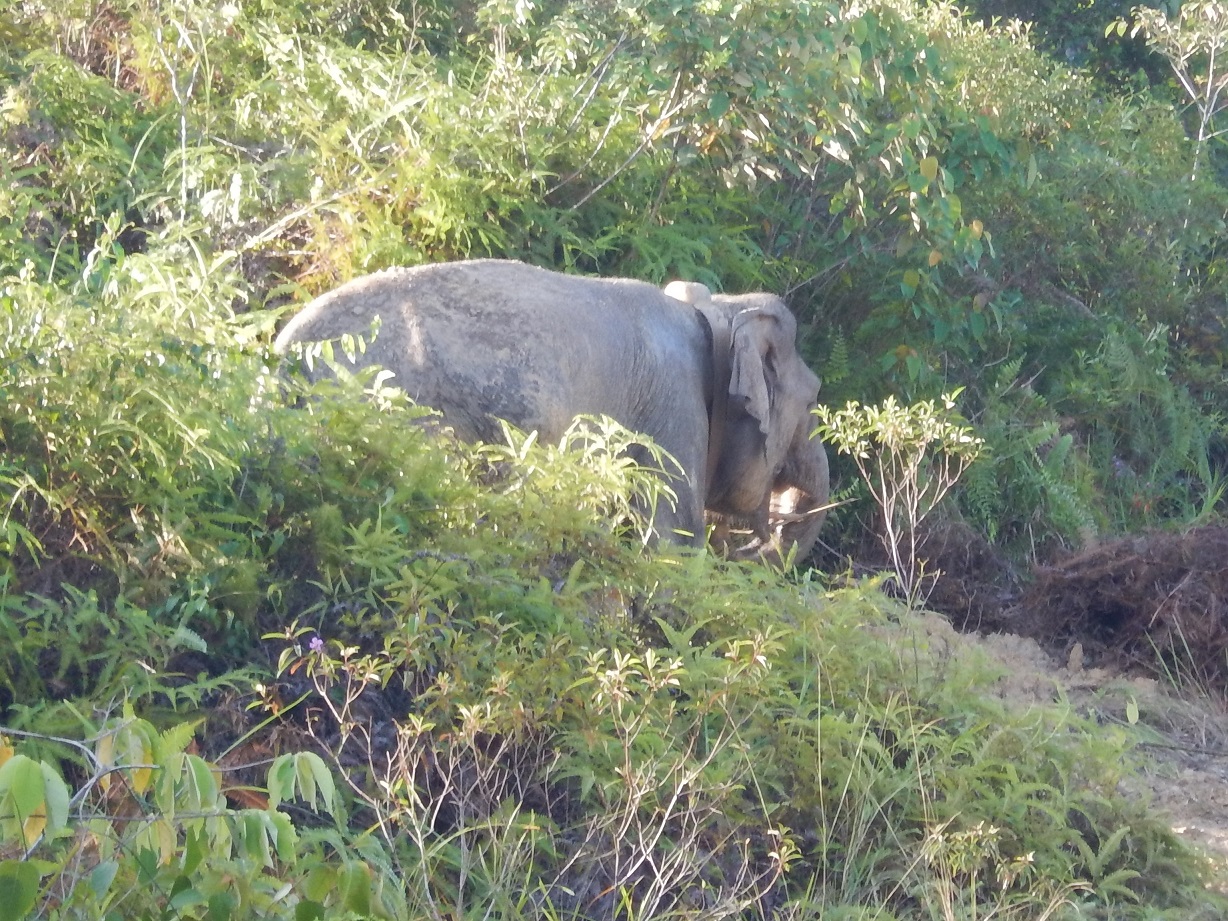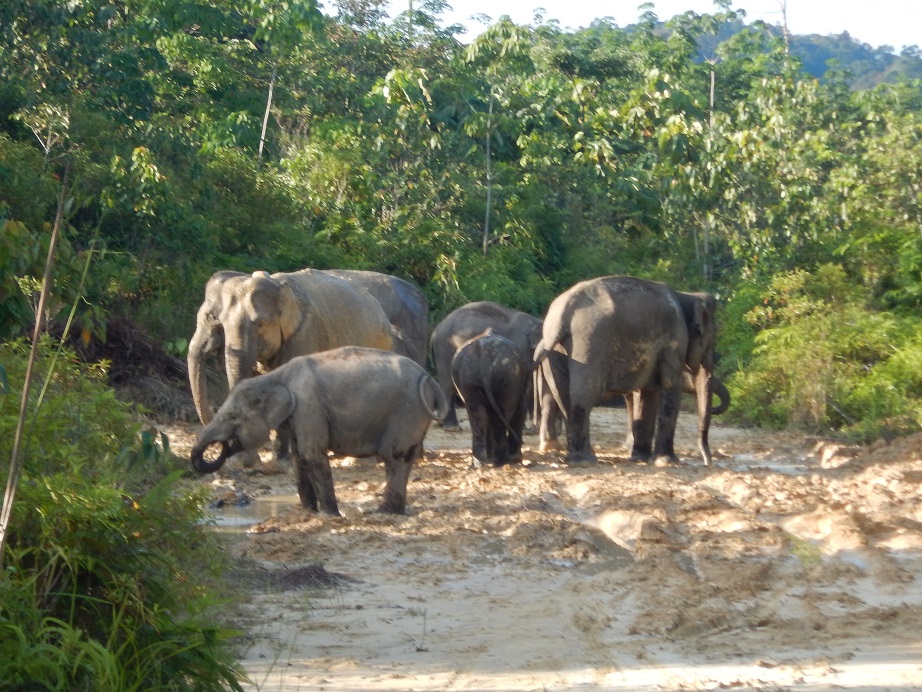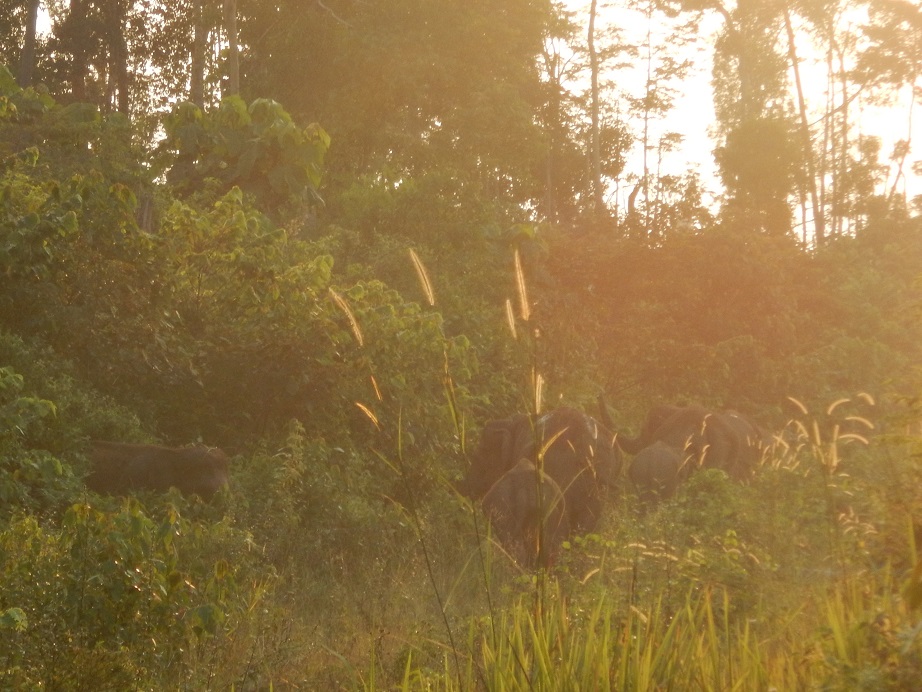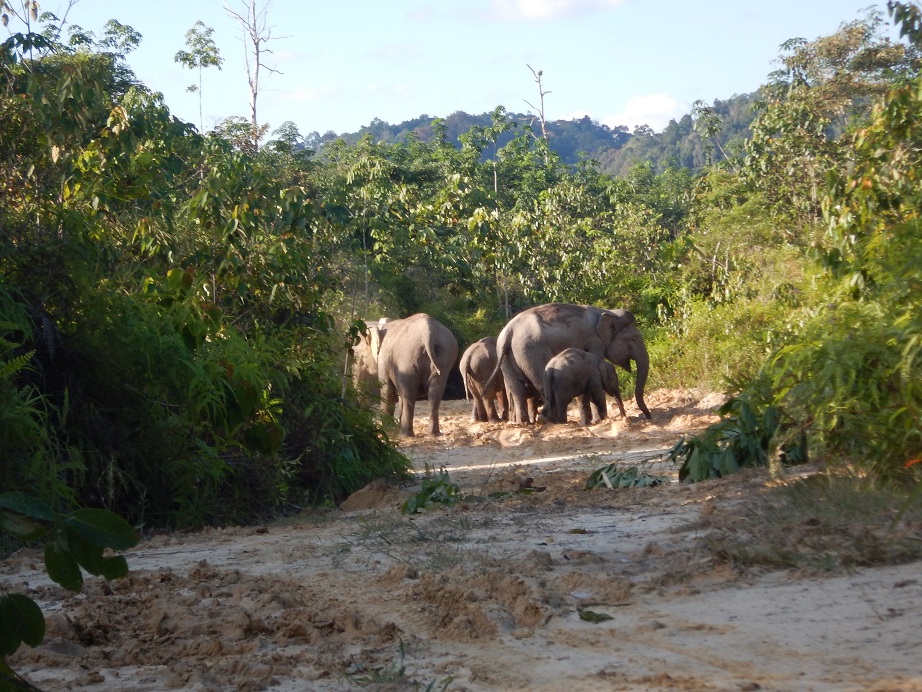In excellent news, Ginting and her family have moved northwards with Cinta and Anna’s herds, into the direction of the Bukit Tigapuluh National Park. The herds were trapped for many months between village fields and a rubber plantation and intense conflicts were the consequence. Only after the rubber company stopped for a few days to unblock the old elephant routes along the rivers could the elephants pass through – which they immediately did.
Thus, with the exception of four bulls, all five elephant herds in the Bukit Tigapuluh landscape (about 150 elephants) are now located in dedicated conservation areas. However, it is still imperative that they be monitored closely because even within areas that have been set aside for conservation, numerous illegal farmers have established fields and small plantations, and the risk of elephants being killed or injured by either poachers or illegal farmers remains high. The Elephant Conservation and Monitoring Units are therefore on location 24/7, following the movements of the herds in order to reduce this risk as much as possible. In addition, we are trying to push concession owners that are responsible for the protection of key elephant habitat to improve habitat protection and to find solutions for encroachment.
Ginting and her family group are most likely closely related to the females of Anna’s herd. Since 2014, both families have spent much of their time together, often forming a larger clan that roams together. Ginting has a male calf named Chrisna. He was only a few weeks old when we first collared Ginting in 2014. The baby bull has developed into a buffalo-sized healthy youngster, always up for trouble and play.


.jpg)



